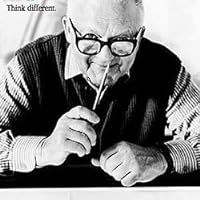Kirill Nikolenko
https://www.goodreads.com/gerr_alt


“Day by day, week by week, the dreams, the visions, came oftener, grew deeper. They were not occasional now, but occupied most of the day. We would see her rapt, as if in a trance, her eyes sometimes closed, sometimes open but unseeing, and always a faint, mysterious smile on her face. If any one approached her, or asked her something, as the nurses had to do, she would respond at once, lucidly and courteously, but there was, even among the most down-to-earth staff, a feeling that she was in another world, and that we should not interrupt her. I shared this feeling and, though curious, was reluctant to probe. Once, just once, I said: ‘Bhagawhandi, what is happening?’ ‘I am dying,’ she answered. ‘I am going home. I am going back where I came from – you might call it my return.’ Another week passed, and now Bhagawhandi no longer responded to external stimuli, but seemed wholly enveloped in a world of her own, and, though her eyes were closed, her face still bore its faint, happy smile. ‘She’s on the return journey,’ the staff said. ‘She’ll soon be there.’ Three days later she died – or should we say she ‘arrived’, having completed her passage to India?”
― The Man Who Mistook His Wife for a Hat
― The Man Who Mistook His Wife for a Hat

“Our efforts to ‘re-connect’ William all fail – even increase his confabulatory pressure. But when we abdicate our efforts, and let him be, he sometimes wanders out into the quiet and undemanding garden which surrounds the Home, and there, in his quietness, he recovers his own quiet. The presence of others, other people, excites and rattles him, forces him into an endless, frenzied, social chatter, a veritable delirium of identity-making and -seeking; the presence of plants, a quiet garden, the non-human order, making no social or human demands upon him, allows this identity-delirium to relax, to subside; and by its quiet, non-human self-sufficiency and completeness allows him a rare quietness and self-sufficiency of his own, by offering (beneath, or beyond, all merely human identities and relations) a deep wordless communion with Nature itself, and with this the restored sense of being in the world, being real.”
― The Man Who Mistook His Wife for a Hat
― The Man Who Mistook His Wife for a Hat

“Because visceral design is about initial reactions, it can be studied quite simply by putting people in front of a design and waiting for reactions. In the best of circumstances, the visceral reaction to appearance works so well that people take one look and say “I want it.” Then they might ask, “What does it do?” And last, “And how much does it cost?” This is the reaction the visceral designer strives for, and it can work. Much of traditional market research involves this aspect of design.”
― Emotional Design: Why We Love (or Hate) Everyday Things
― Emotional Design: Why We Love (or Hate) Everyday Things

“Faced with the prospect of following a convention, there’s a great temptation for designers to try reinventing the wheel instead, largely because they feel (not incorrectly) that they’ve been hired to do something new and different, not the same old thing. Not to mention the fact that praise from peers, awards, and high-profile job offers are rarely based on criteria like “best use of conventions.” Occasionally, time spent reinventing the wheel results in a revolutionary new rolling device. But usually it just amounts to time spent reinventing the wheel.”
― Don't Make Me Think, Revisited: A Common Sense Approach to Web Usability
― Don't Make Me Think, Revisited: A Common Sense Approach to Web Usability

“To distort the letters of the alphabet in “the style of” Chinese calligraphy (sometimes referred to as chop suey lettering), because the subject happens to deal with the Orient is to create the typographic equivalent of a corny illustration. To mimic a woodcut style of type to “go with” a woodcut; to use bold type to “harmonize with” heavy machinery, etc., is cliché-thinking. The designer is unaware of the exciting possibilities inherent in the contrast of picture and type matter. Thus, instead of combining a woodcut with a “woodcut style” of type (Neuland), a happier choice would be a more classical design (Caslon, Bodoni, or Helvetica) to achieve the element of surprise and to accentuate by contrast the form and character of both text and picture.”
― Thoughts on Design
― Thoughts on Design
Kirill’s 2023 Year in Books
Take a look at Kirill’s Year in Books. The good, the bad, the long, the short—it’s all here.
More friends…
Favorite Genres
Polls voted on by Kirill
Lists liked by Kirill




















